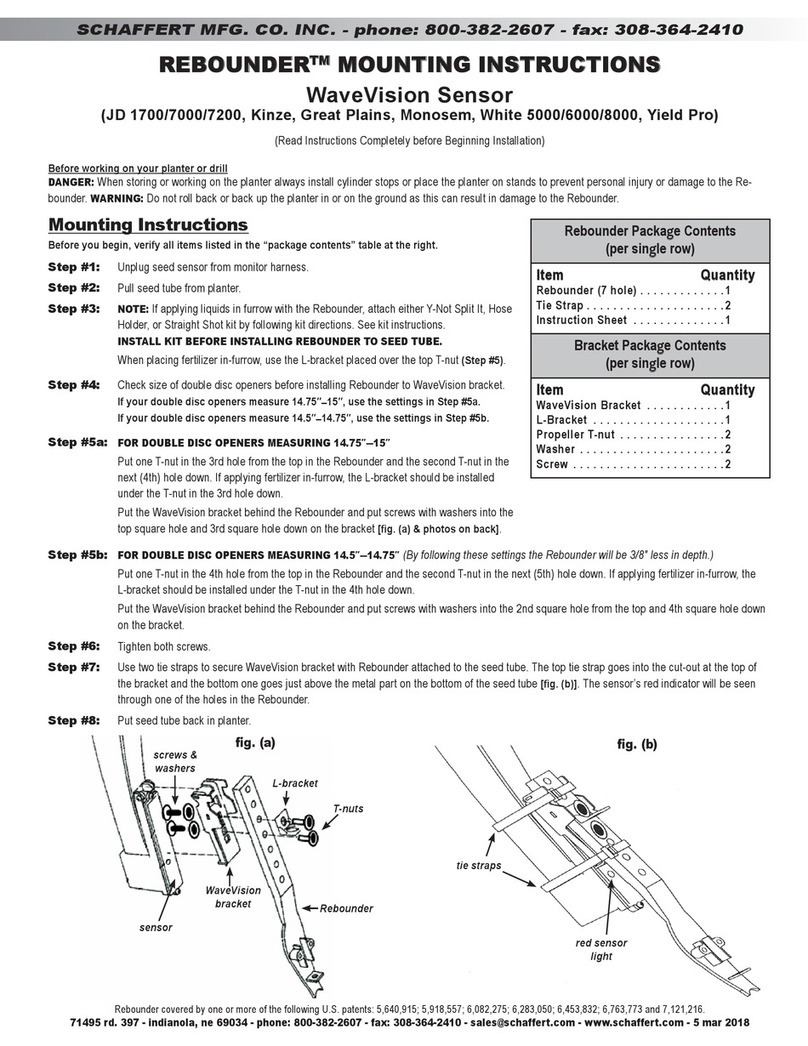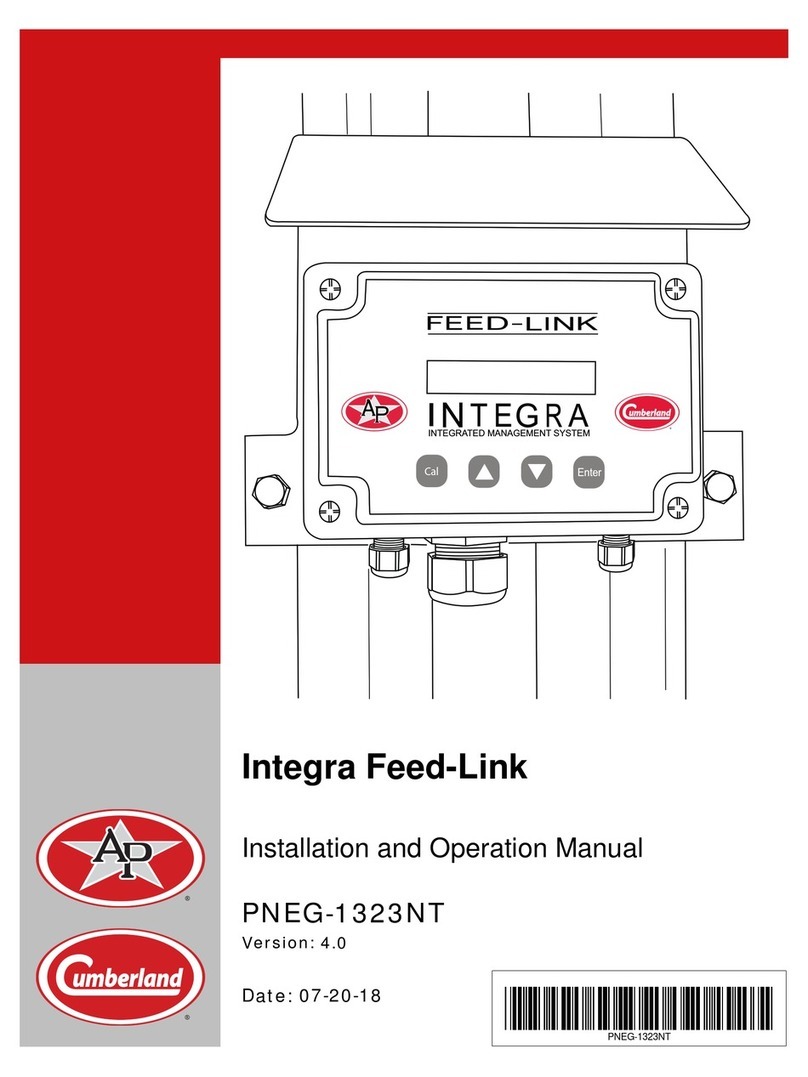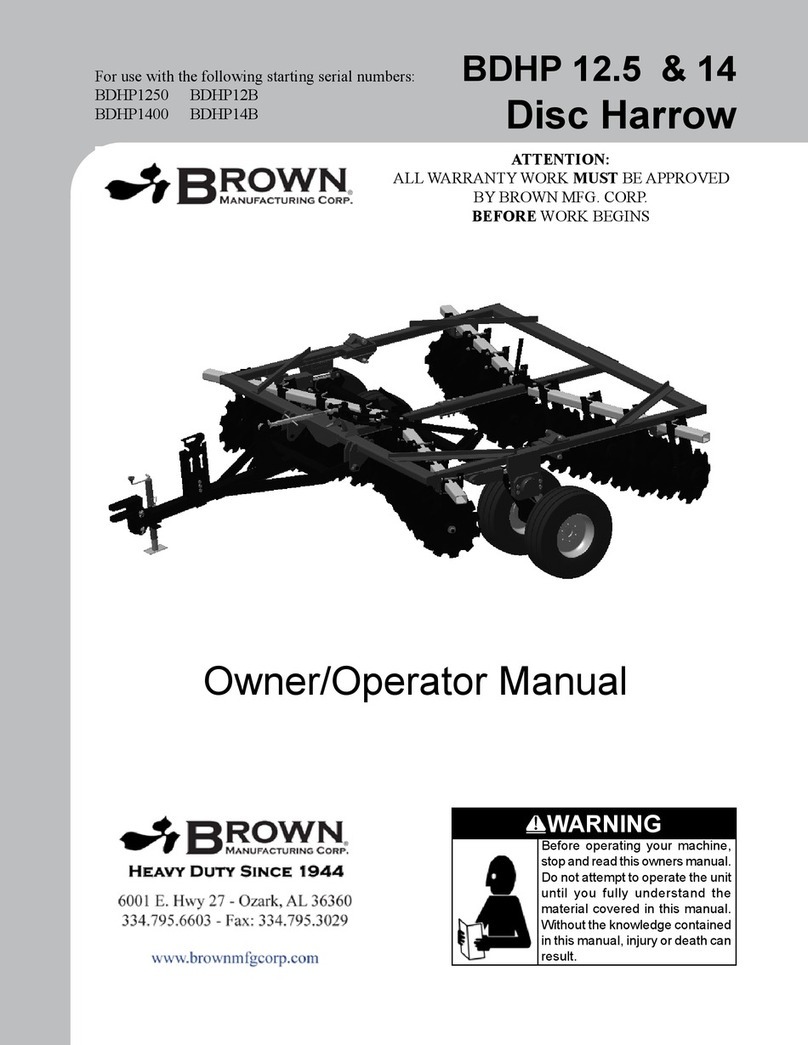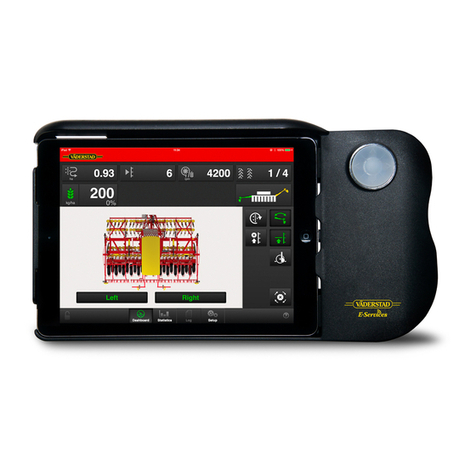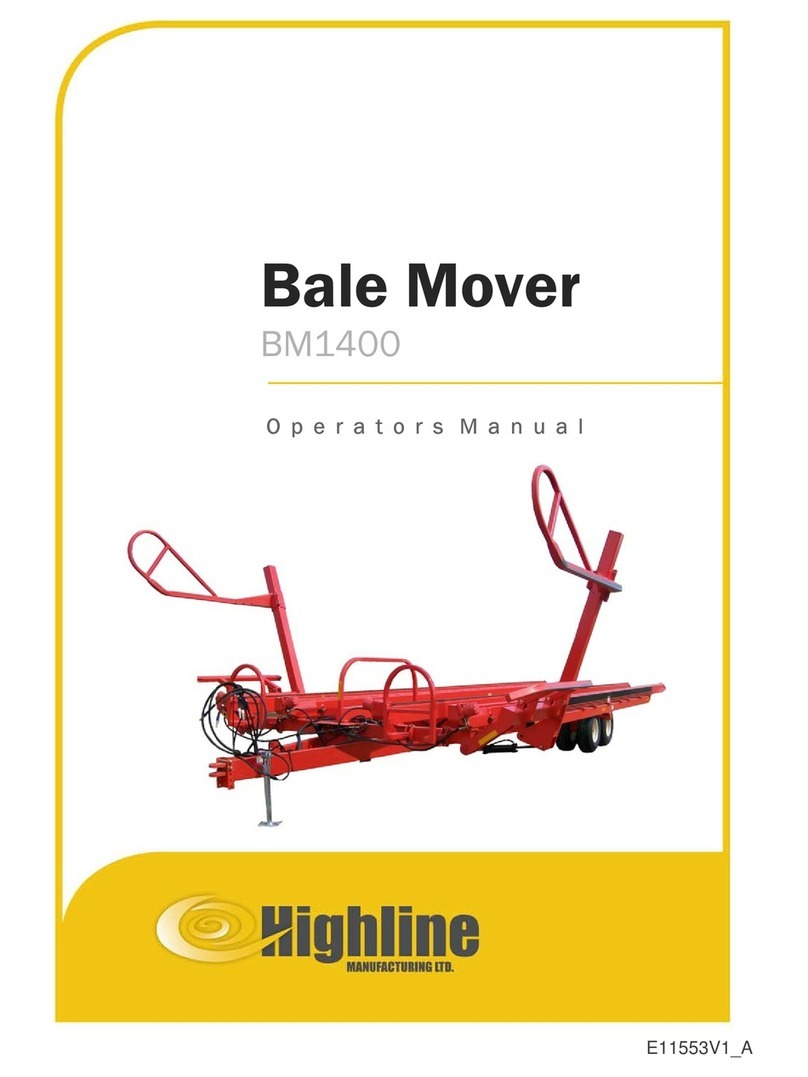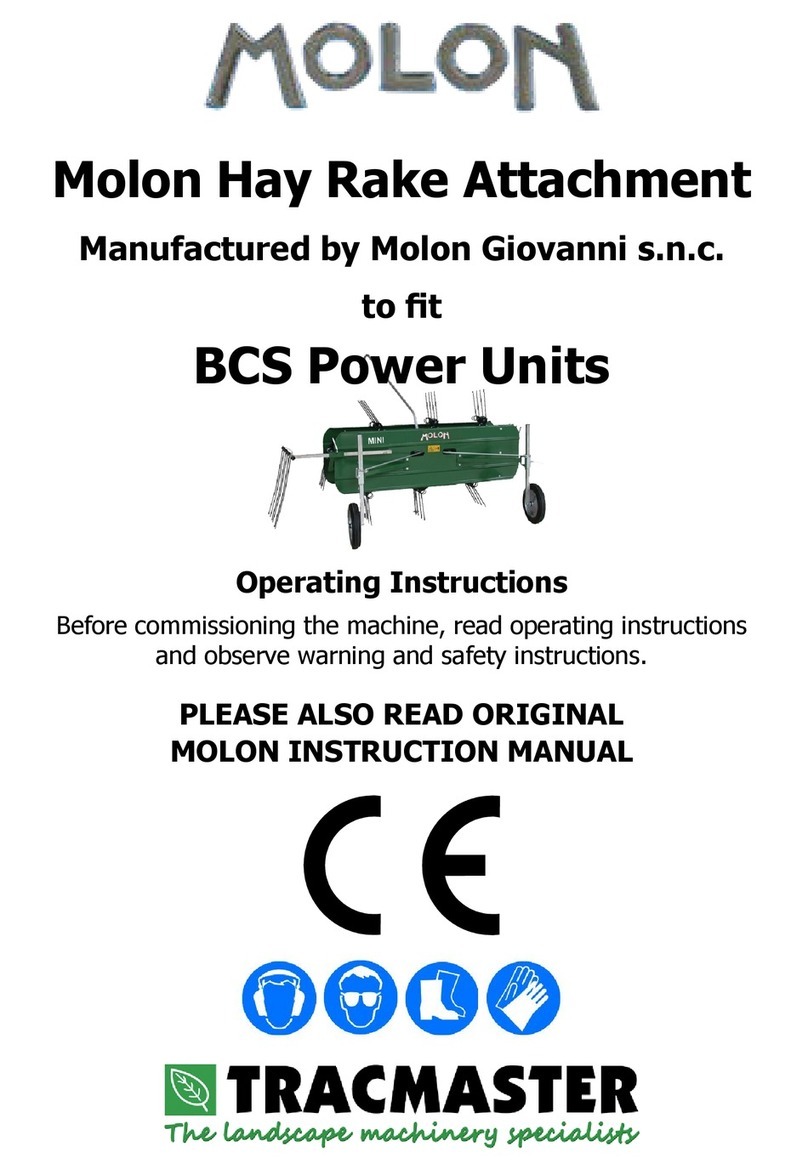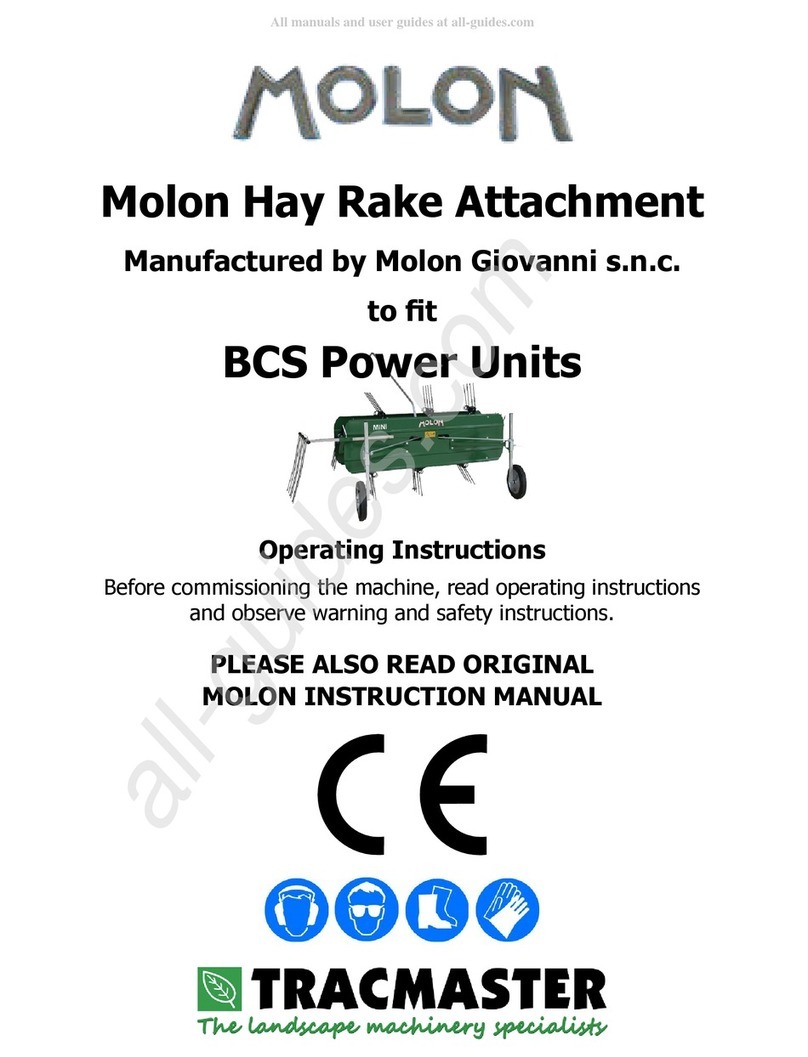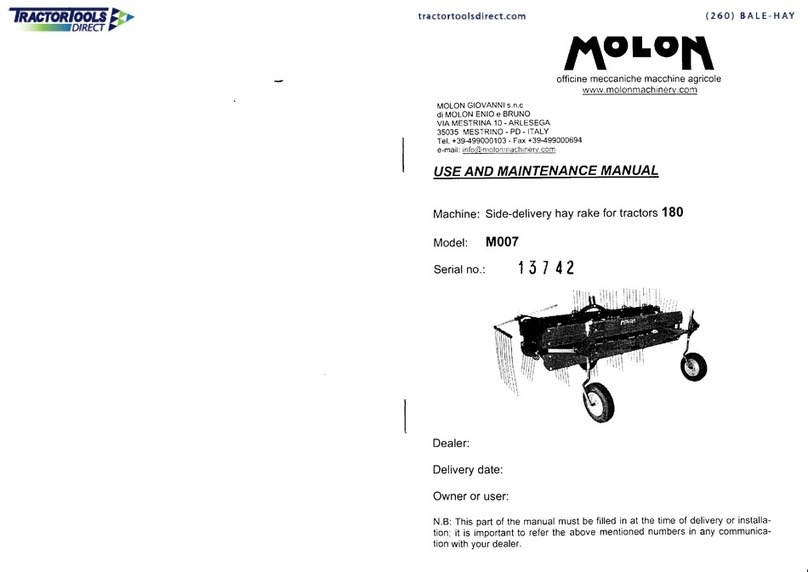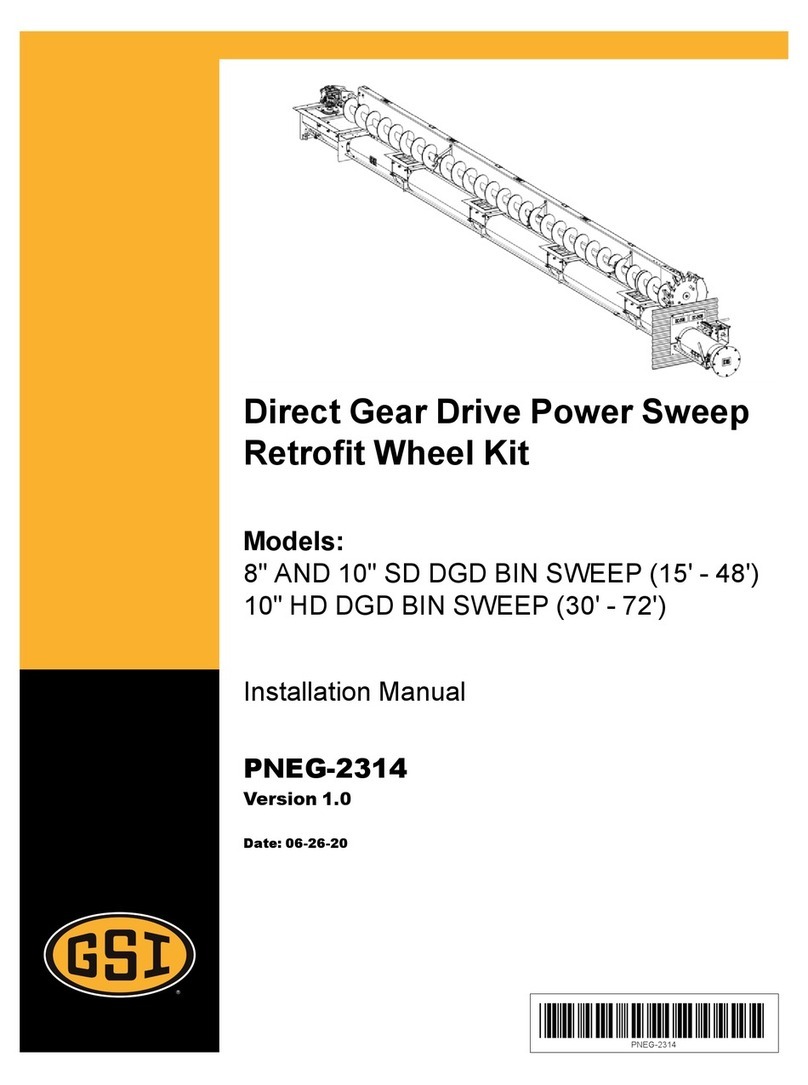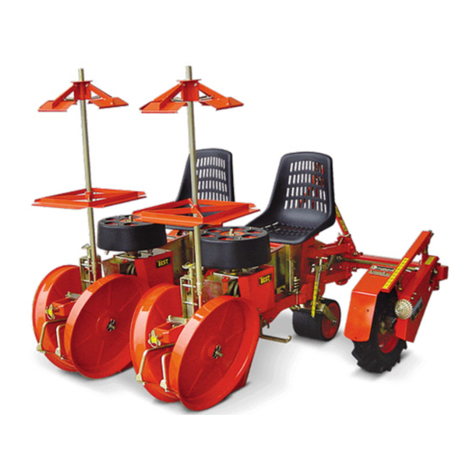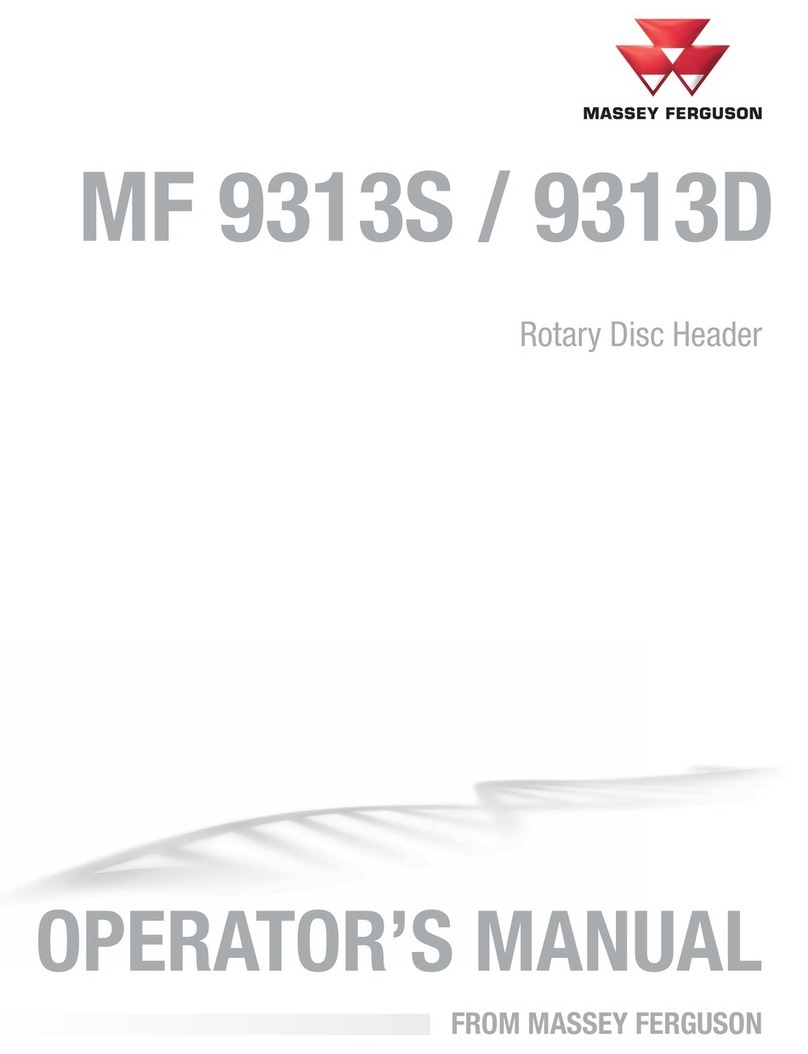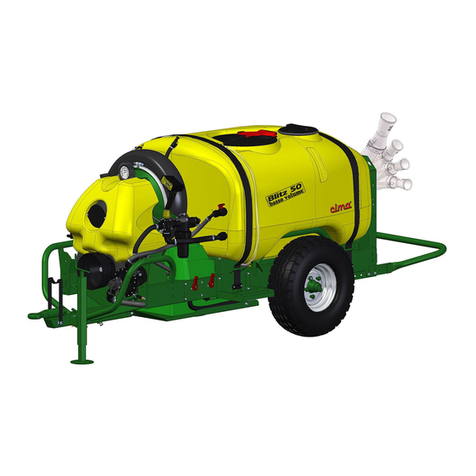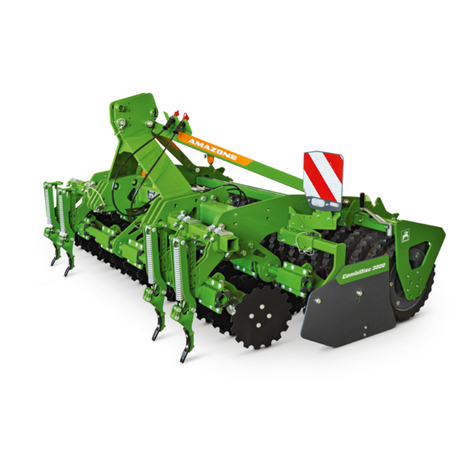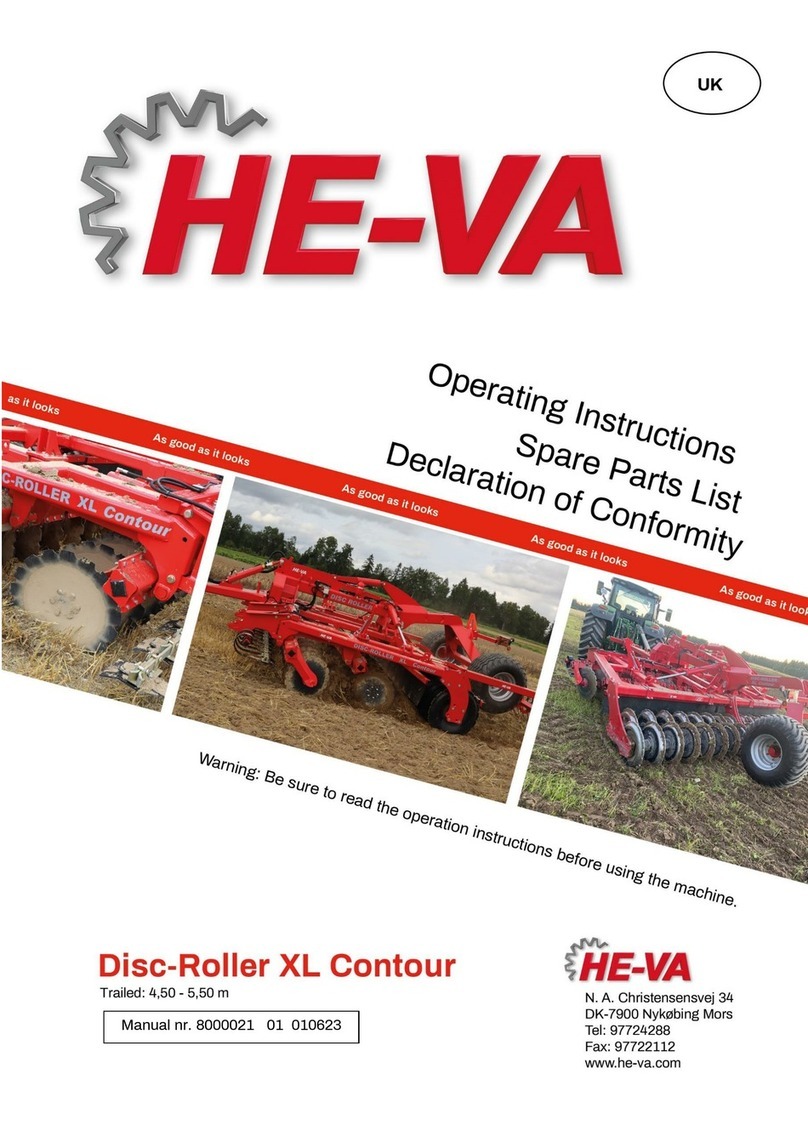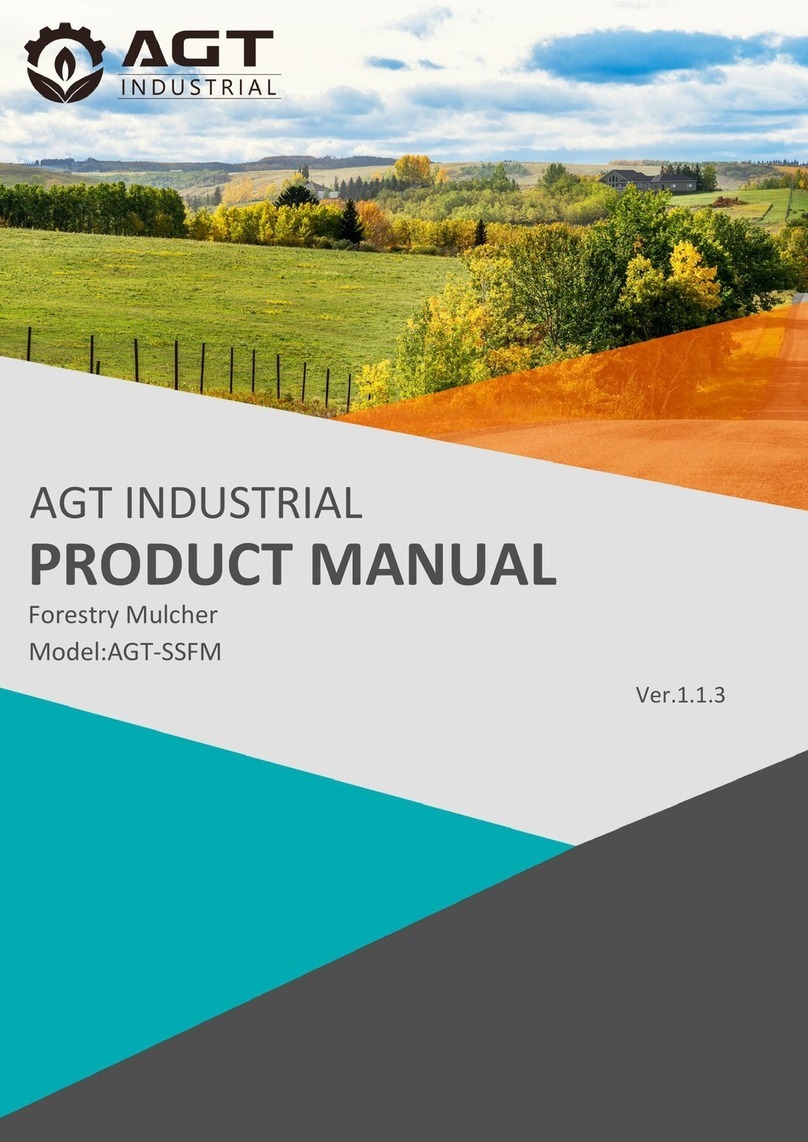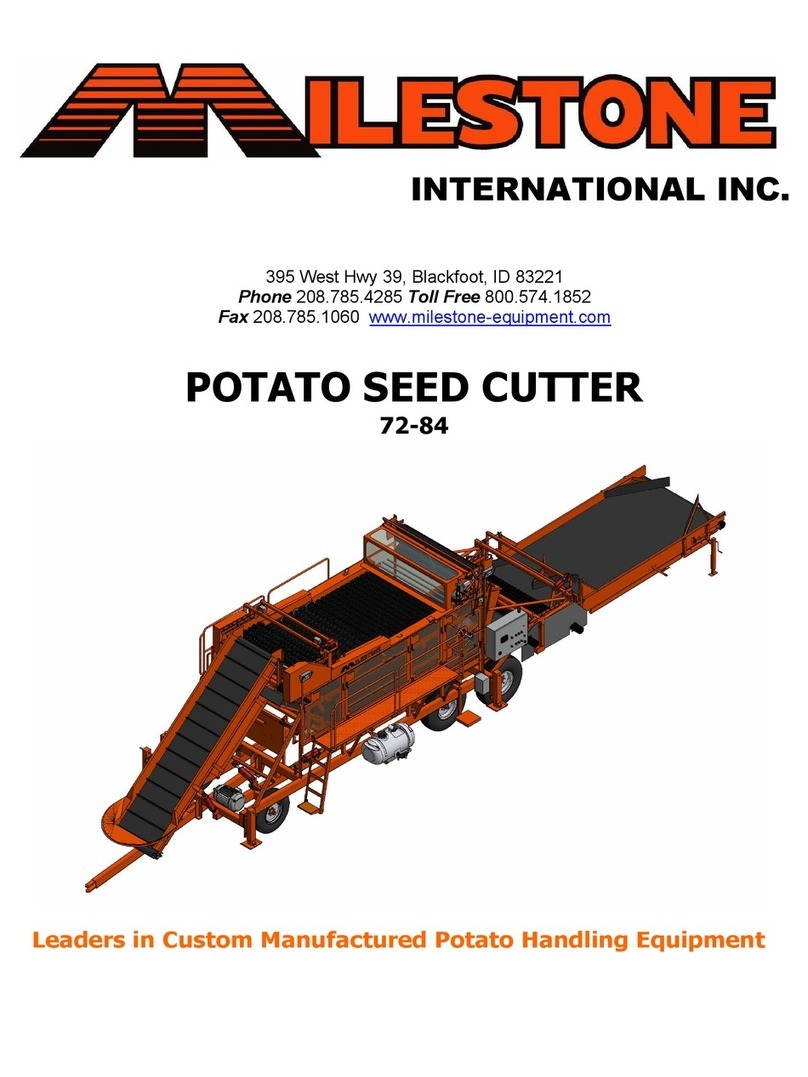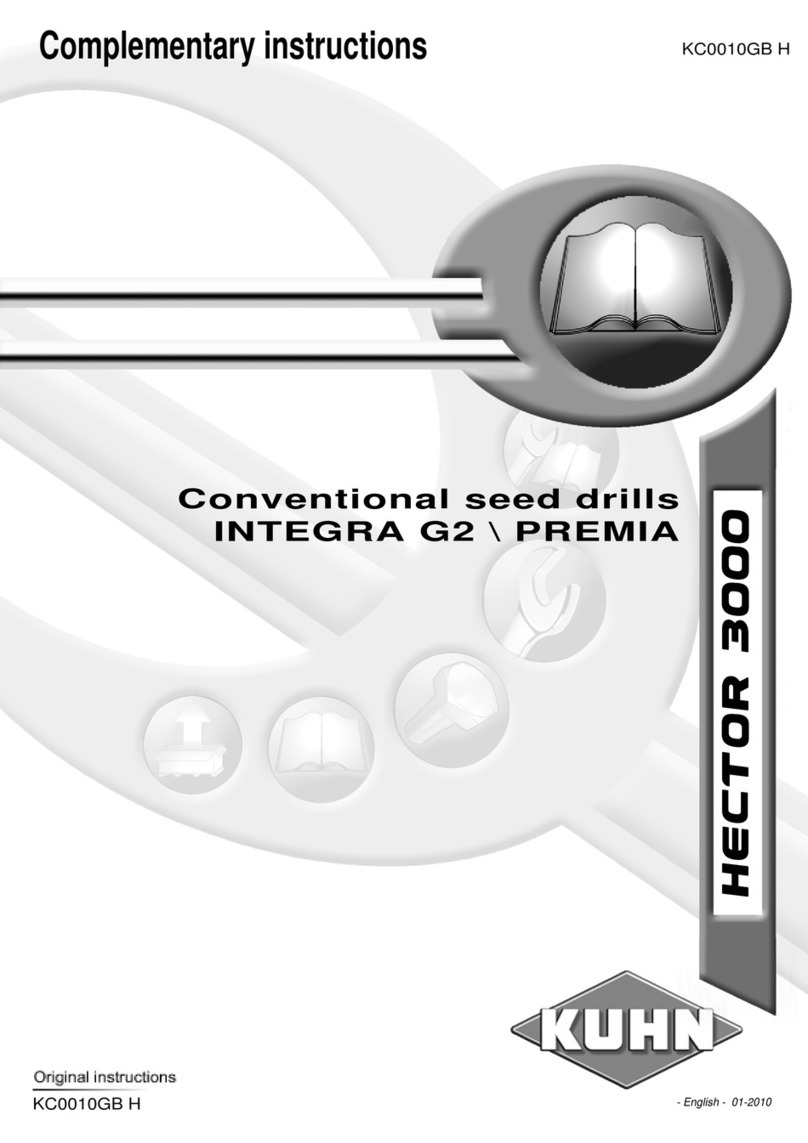
MACHINE
EMPLOYMENT
The machine
is
a hay-rake tedder.
Use
it
only and exclusively for raking
and
ted-
ding
hay
and
cut grass.
The manufacturer declines any responsi-
bility for a different
use
from the de-
scribed one.
Familiarize yourself with the operating
controls and the correct
use
of
the ma-
chine.
~Never
permit children or inexpert
~
to operate your machine.
& Avoid working whilst people,
especially children
and
pets, are
nearby.
Keep
in
mind that the
operator
is
responsible for accidents to
people and to their property.
The user must know the characteristics
and
the safety procedures of the ma-
chine.
The accident prevention rules and any
other requirement
of
safety and
of
occu-
pational medicine must always
be
ob-
served.
The manufacturer declines any re-
sponsibility for possible damages
deriving from any arbitrary change
on
the
machine.
&
Do
not get
on
the machine whilst
working, nor have yourself car-
ried
by
it.
ACCIDENT
PREVENTION
MEASURES
Follow the instructions described
on
the
labels stuck
on
the machine.
Q Scour the
area
where the ma-
chine
is
to
be
used
and remove
all foreign matters (stones, wire,
sticks, etc...).
4
Carry out the checks, the operations of
maintenance, adjustment and repair
when the machine
is
not working and
is
unhooked from the tractor.
In
case
of
road haulage, the highway
code rules have to
be
observed.
& Danger through rotating parts!
It
is
absolutely forbidden to take
away
or
to damage the guards
and
to
use
the machine without them.
& Danger through thrown objects!
The machine
can
throw objects
or stones that
may
lie
on
the
ground.
A
It
is
forbidden to stay within the
~
working radius
of
10
m.
&
Do
not carry out operations of
cleaning or maintenance with
engine on, nor with connected
power take-off.
& While working
in
presence
of
dust, wear a mask
and
glasses to
protect your throat and
eyes
if
your tractor
is
lacking a cabin.
The acoustic pressure level
is
inferior to
70
dB.
The safety signals are (fig. 2):
A= Before the
use
of
the machine,
read
the manual.
B=
Danger through thrown objects;
keep
the safety distance.
C=
Danger through drive belts;
do
not
take away the guards with machine
on.
D= Turn
off
the engine and take away the
key
before any operation
of
repair
and
maintenance.
The corresponding labels are stuck
on
the
machine
in
the indicated places. (fig. 3)
These signals must always
be
visible and,
when lost or illegible, they have to
be
replaced with original ones.
A
B
c
D
5
&tW\1
~--j
r~-~-;-----
\i£DH1
~
II'&&
::
.
i[
~0
u
~~
&;;:]
Fig.
2
Fig.
3
